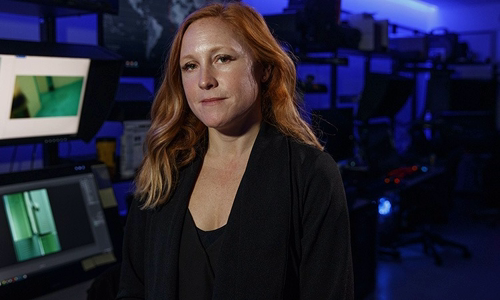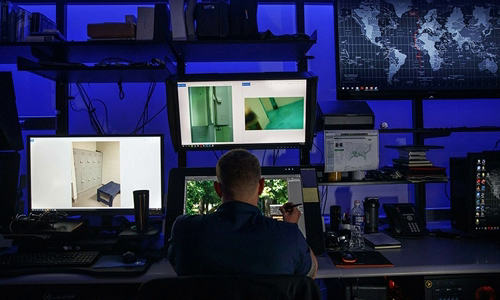The unusual door handle in a photo or bird's voice in a video helps investigators find child sexual abusers.
A team of investigators spent hours researching photographs of boys in a swimsuit changing room in what looked like a Christian Youth Association (YMCA) facility. These photos are clues for them to track down a pervert who specializes in snapping photos of boys changing clothes.

Erin Burke, director of the HSI Child Abuse Investigation Unit Photo: AP
They later discovered unusual plastic handles on the closets in those photos. They edit those photos to remove the images of children, then send them to the cabinet manufacturer. A manufacturer realized this was the type of cabinet they installed at a YMCA facility.
Finally, thanks to this clue, investigators discovered that the pictures were taken at a YMCA facility in Sandusky, Ohio. The suspect took the photos and was a former Scout captain.
Not the FBI or local police, these investigators are from the U.S. Immigration and Customs Enforcement (ICE). The Department of Homeland Security Investigation (HSI), ICE's criminal investigation unit, has a Child Abuse Investigation Team, where agents regularly analyze photos of child sexual abuse photos and videos. to track down the culprit.
They look for unusual clues to help find victims and bring child sexual abusers to justice. The clue to help them solve the case could be the door handle like the case above, maybe the song of a bird, or the unusual equipment on a playground.
"We look for hidden details that people often overlook," said agent Erin Burke, captain of the Child Abuse Investigation Team.
HSI investigations have led to thousands of arrests related to child sexual abuse. However, HSI also has many difficulties as a part of ICE.
Funding for HSI has dropped sharply as most of ICE's budget has been focused on migrants. Some city governments and police refuse to cooperate with ICE when they conduct raids against illegal immigrants. This sometimes affects the investigation of HSI. An email ending in "ice.dhs.gov" can also get them in trouble.
"99% of our jobs are not related to immigration," Burke said. "But people don't seem to understand this."
ICE has been involved in investigating child pornography since criminals also traded paper-based photo albums across the border. Now all transactions are done online. The growing Internet has made it difficult for global investigators to control tens of millions of pornographic images today.
Cheap online storage and easy-to-use encryption tools make black websites boom, where criminals easily hide and operate. This makes surveys more difficult.
HSI opened a child sexual abuse research unit in 2011 to search for clues in images to find young victims. An agent and three analysts worked in a small windowless room in a normal office building on the outskirts of Virginia. The sign with the words in bold in red "Checking pornography" is mounted on the door.
Inside, the light from fluorescent light bulbs is replaced with specialized blue light. Modern computers with large screens and high resolutions are placed next to the face sketching machines that are commonly used by police.

An analyst of the Child Abuse Investigation Unit is studying images of the case on a computer Photo: AP
They get information about cases from local police, or international investigators when they find American victims. They may take two days, two weeks, even two years of investigation to identify a victim, but there are some victims who cannot be identified.
Once, while studying photos sent from the National Center for Missing and Abused Children, investigators noticed a photograph taken from the back of a 4-year-old girl.
The photo shows this blonde curly girl climbing a rock. They removed the child from the photo and sent the surrounding rock and foliage to a gardener at the Smithsonian's Natural History Museum. As a result, they delineated the location in the photo to the southern United States.
Next, they discovered the unusual device in the photo of a playground and sent it to toy manufacturing companies to find out where to install it. As a result, they determined it was a neighborhood in Houston.
Then, they send documents about the case to investigators in Texas, who have gone to every house, school, neighborhood ... to search for information about the child. Finally, they identify the victim and find the abuser.
Last June, the girl's father bowed his head to the plea and was sentenced to 35 years for sexually exploiting children. In addition, investigators also discovered at least 222 sets of pictures of her being widely distributed.
In another case, investigators relied on birdsong in a video to solve the case. They filter this sound and send it to researchers to identify the bird and its migratory characteristics. They later found three suspects and the third pleaded guilty last month. The suspect is expected to receive a minimum sentence of 15 years.
"Bad people are often very crafty," Burke said. "But that doesn't mean we don't have the tools and the ability to find them."
Burke said not everyone can do the job in the photo lab, because it greatly affects the mentality of the staff there. Many people worry about their children and are wary of babysitters. They do not want to expose their children to anyone, especially to men. But all feel they need to be responsible for protecting children from abuse.
"If we don't do it, who will do it? Without us, who will look for those children?", An image researcher said.
The unit also organizes therapy sessions for employees to overcome the psychological effects of their work. If an employee can't stand it anymore, they will be transferred to another unit.
"This is very difficult work," Burke said. "But when you save a child, or receive a call to report the victim was saved, you will find this work worthwhile."



 AubreyBettie
AubreyBettie







